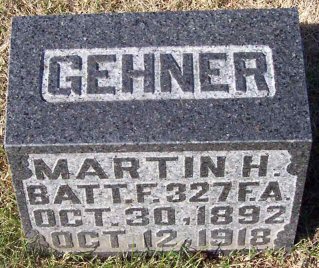Technology Tuesday
"Where are you finding all this stuff?"So where is all this information coming from? There are a lot of great sources to use online (and better still, they're free).Here's a couple the more recent sources.
- Google's search engine is sometimes the best starting point. Try googling "Henry Gehner, Sr." and you'll get his headstone from findagrave.com, his biography in the 1911 History of Macoupin County, Illinois in Google Books, and hopefully soon this blog. Putting in Fred Gehner gave hiss patents (in the previous post), and a lot more.
- A big component of what Google has for genealogists is hidden over in Google Books. Most things published in the US before 1923 are in the public domain now, and Google has been scanning many of the collections of the Big Ten and other university libraries. Great stuff there. Their scanners are much better than any consumer-grade scanner I've ever seen- their scan of the picture of Henry Sr and Caroline (Weisbrodt) Gehner in the 1911 History of Macoupin County is almost better quality than the copy in the book at the farm in Illinois.
- Familysearch.org is the non-profit established by the Church of Jesus Christ of Latter-Day Saints to be the online presence for their family research efforts. There is a HUGE amount of new stuff coming in the future years, as they digitize more and more of their records with their recent agreement with Ancestry.com to digitize some billion records over the next five years. They have many of the records already, but it meant having to order microfilms and spend your day at a film reader scrolling through the film. This is just the beginning. If you haven't ever seen it, the online tour of Granite Mountain (the film vault in Utah) of their collection is amazing.
- The Family History's microfolm collection includes the baptism, marriage and death records for the Lutheran church in Borgholzhausen for 1644-1921. If you want to spend days staring at Germanic script, generations of Gehners and Schweppes are probably all there to be found.
- Taufen-baptisms
- Hieraten- marriages
- Tote- deaths






